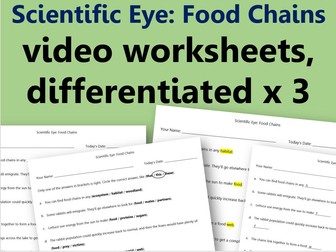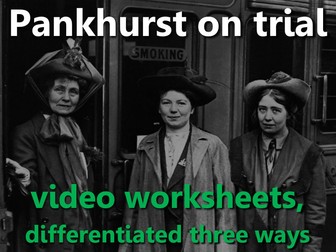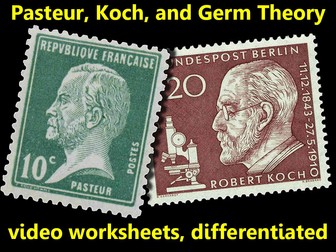Scientific Eye: Food Chains. Video worksheets, differentiated x3.
<p>Completely revised in Dec. 2024: improved questions, layout, and answer sheet. Further differentiation. Please ensure you can access the video before you get this resource.</p>
<p>The film covers: basic terrestrial food chains, population increase and decrease, interdependency; production, consumption. Pyramids of number. Competition. Changes between trophic levels. Food webs. Windermere’s arctic char: ecological surveying, their place in the food chain. Zooplankton sampling. Algae and sewage run-off. Abiotic factors measured. Pesticides and bioaccumulation. Find the film by searching YouTube’s Tangwaap channel for Scientific Eye: Food Chains. Many other channels also host the video.</p>
<p><strong>13 questions</strong> for the <strong>19-min</strong> film. Now differentiated <strong>THREE</strong> ways! All versions look similar, but “B” version has subtle clues, and “C” version asks pupils to circle the right answers from a choice of three, allowing pupils with <strong>literacy difficulties</strong> to access the work. Questions right up to the end, <strong>no slack time</strong>. Answer sheet. <strong>Very easy to mark</strong>. .doc & .pdf for all files. Two separate links to the film on all sheets.</p>




















